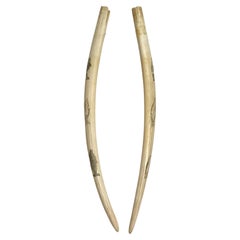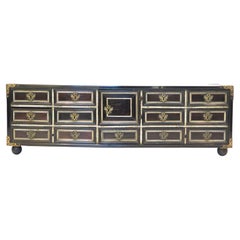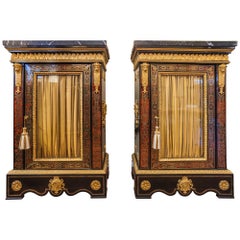Bone Furniture
Early 1900s American Tribal Antique Bone Furniture
Bone
1890s Chinese Antique Bone Furniture
Bone, Wood
Early 20th Century French Country Bone Furniture
Antler, Horn
Mid-20th Century German Bone Furniture
Stainless Steel
18th Century Italian Antique Bone Furniture
Bone, Rosewood
Mid-19th Century French Charles X Antique Bone Furniture
Belgian Black Marble, Bronze
19th Century Sri Lankan Anglo-Indian Antique Bone Furniture
Bone, Hardwood, Ebony, Sandalwood
Mid-20th Century African Bone Furniture
Antler
1870s English Antique Bone Furniture
Brass
1860s Antique Bone Furniture
Ivory, Wood
1870s English Antique Bone Furniture
Silver
Early 18th Century Italian Neoclassical Antique Bone Furniture
Brass
1860s English Antique Bone Furniture
Sterling Silver
1970s Mexican Vintage Bone Furniture
Sterling Silver
19th Century Antique Bone Furniture
Bone, Wood
1870s English Antique Bone Furniture
Silver
Late 19th Century Indian Anglo-Indian Antique Bone Furniture
Silver, Pewter
Late 19th Century Indian Anglo Raj Antique Bone Furniture
Bone, Precious Stone, Sandalwood
1870s English Antique Bone Furniture
Tortoise Shell
Late 19th Century Indian Anglo-Indian Antique Bone Furniture
Bone, Padouk, Sandalwood
1870s French Napoleon III Antique Bone Furniture
Brass
19th Century Indian Anglo-Indian Antique Bone Furniture
Bone, Shell, Sandalwood
Late 19th Century Indian Anglo-Indian Antique Bone Furniture
Bone, Padouk, Sandalwood
Late 17th Century Spanish Spanish Colonial Antique Bone Furniture
Bone, Ebony, Walnut
19th Century Indian Anglo-Indian Antique Bone Furniture
Bone, Padouk, Sandalwood
19th Century Indian Anglo-Indian Antique Bone Furniture
Silver
Mid-20th Century French Country Bone Furniture
Antler
1930s French Vintage Bone Furniture
Tortoise Shell, Glass, Paint
Late 19th Century French Antique Bone Furniture
Antler, Walnut
Late 18th Century Indian Anglo-Indian Antique Bone Furniture
Brass
1690s Italian Antique Bone Furniture
Tortoise Shell
18th Century Indian Anglo-Indian Antique Bone Furniture
Multi-gemstone, Brass
Late 19th Century Indian Anglo Raj Antique Bone Furniture
Bone, Precious Stone, Ebony
1880s English Antique Bone Furniture
Silver
Early 20th Century American Bone Furniture
Bone, Wood
18th Century Italian Antique Bone Furniture
Shell, Wood, Tortoise Shell
Mid-19th Century Sri Lankan Anglo-Indian Antique Bone Furniture
Silver
19th Century Antique Bone Furniture
Bone
Early 19th Century European Baroque Antique Bone Furniture
Brass
Mid-19th Century Indian Anglo-Indian Antique Bone Furniture
Bone, Shell
1970s Vintage Bone Furniture
Horn
1690s Spanish Antique Bone Furniture
Iron
Mid-20th Century French Louis XV Bone Furniture
Brass, Bronze, Enamel
Early 19th Century Sri Lankan Anglo-Indian Antique Bone Furniture
Bone, Ebony, Sandalwood
2010s Art Deco Bone Furniture
Horn
2010s Art Deco Bone Furniture
Horn
2010s Art Deco Bone Furniture
Horn
2010s Art Deco Bone Furniture
Horn
20th Century French Mid-Century Modern Bone Furniture
Stainless Steel
1980s Unknown Art Deco Vintage Bone Furniture
Bone
2010s Art Deco Bone Furniture
Horn
1950s African Vintage Bone Furniture
Bone
Late 19th Century English Antique Bone Furniture
Horn
Mid-19th Century French Antique Bone Furniture
Copper
1880s Indian Anglo-Indian Antique Bone Furniture
Bone, Wood, Ebony
20th Century Japanese Anglo-Japanese Bone Furniture
Bone
Late 19th Century English High Victorian Antique Bone Furniture
Bone, Ebony, Rosewood, Satinwood
17th Century European Louis XIII Antique Bone Furniture
Tortoise Shell, Wood, Ebony, Oak



